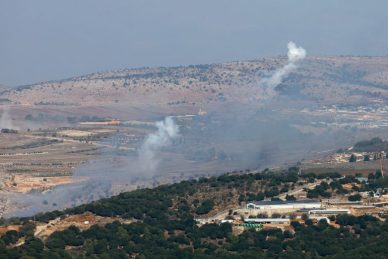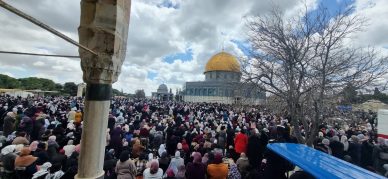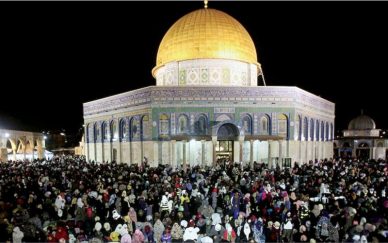The word “Yarshaleem” is an Aramite term and “Poushum” was the term used by the 12th Egyptian family. Then it became “Orosalem” a Cana’anite term which means the “city of peace” according to its phonetica symonitica. Likud followers insist that the word “Zord” is Accadian and Sumerian which changed the word to Hebraic and Mosaic but this is untrue for three reasons: first we have explained already its Cana’anite origin; secondly the word “Oro”. means “Yra” (“disperse” in Hebrew) (1). The term “Peru” means the city which has upper and lower parts and it is used as “Yagry” or “Sury” to disperse the word (Or Ory Yuro Piery) and “Shalem” to emphasize the linguistic aspect to find a Hebraic origin. The word “Salem” or “Shalem” is Biblical and not Hebraic because the sound “s” is not phonetically Hebraic but rather it is Cana’anite; and thirdly the “sh” sound is Aramite therefore “Shalem” is an Aramite word. However it had been used for the word “peace” by four languages: Aramite Cana’anite Orgy and Hebraic. The term “Oro” is exclusively Cana’anite and Aramite so the total word is either Cana’anite or Aramite. This vehement attempt by the Likud to settle this issue has caused trouble for the Israeli linguists and rabbis especially when interpreting the word “Oro” as “Peri” or “Yry” which means to build Al Haykal. This has caused three problems:
(a) This word does not mean “build” but rather it means “found”. The city was called “David’s City” after it had been called the “city of peace” or “God’s city” (Al Quds) for its holiness and spiritual connotation of the word in Arabic especially for Christians and Muslims but the word “Peri” or “Yara” means only to return or go back.
(b) “Orshalem” means “God is here” or “peace in your place” and “Oro” means “place”. This term has been extensively used in Christianity as a comprehensive belief (2) and so the city had become a place for prayers and worship rather than a geographical site. The word then became an Aramite term that means “peace upon you or with you” and it is the same in Arabic although the term “Oro” has not been clarified. “Salem” or “Shalem” has been used for “peace” in most oriental languages. The word “Selm” is mainly an Arabic word that means “peace”. Later on the city was called “Elia” from “Alia” which means “the highest place” in Arabic.
(c) The spiritualism of the city has nothing to do with the Hebraic traditions although David lived in the city. Besides the city did not play any role in the Mosaic message except as a home for the State whereas in Christianity it is the home of Mary and Jesus the Christ and in Islam it is the place of Al:isra’ (the night journey) and the Ascent. The spiritualism of the city is more associated with Islam and Christianity as a linking point between the Earth and the Heavens. The city is of historical and ecological significance for the Jews because of certain conditions whereas in Islam and Christianity it has been doomed or destined by God either as the home of Christ or the Ascent of our Prophet Mohammed (peace be upon him) and the home of most prophets as well. The holiness of the city is historically limited according to the Jews but it is more comprehensive and permanent for both Muslims and Christians as well. Consequently it is not as important to the Jews given that Moses came from Egypt and only passed through the city after he had crossed the Red Sea by the miracle mentioned in the Holy Qur’an. The Jews immigrated to the city but they had never owned or built it up according to the following reasons:
1. The city had been situated on the southeast hill before the monarchy and David’s reign as shown in the Bible and verified by archaeological finds. It was a stronghold position taking the water from Jehoun spring (3) and it was a safe and prosperous city because it was able to defend itself (4) which nullifies the fact that East Jerusalem had been originally Hebraic although the Jews came to the city located on the hill 640-700 metres above the sea level and limited by Mount.Scopus (Al:masharef) (5) in the north and Jabal Al Zeitoun in the east.
2. The city is surrounded by natural rivers and suburbs (6) with distinct limits even before it was a Cana’anite city geographically.
3. East Jerusalem was a Cana’anite city historically and geographically but Christian Jerusalem extends westward (7) but the centre of the city is the eastern part so Likud followers have planned to expand this part in order to change its historical and religious features which are the symbol of spiritualism.
4. Ancient archaeological digs have revealed that the city was an independent State before the Jews immigrated from Egypt to Palestine. The rulers of the city were not kings and they fought the Egyptians however they lost some towns in Syria especially along the coastal region. The city remained independent at all times. The Jews brought monarchy to the city which had been a Cana’anite State especially the eastern part although the Egyptian rulers allowed the Jews to immigrate to some marginal regions. The eastern part had never been ruled by a monarchy which gave it a special character during the Old Bronze Era.
5. The city had been invaded by the Pharoahs in the 15th century but it resisted them as other Cana’anite cities did such as Askalan (8). The city was ruled by both the Jews and the Pharoahs. The former depended on religious ideology whereas the latter depended on political ideology. This is similar to what happened before 1948 when the Jews came to Palestine especially during Sultan Abdelhameed’s reign under the pretext of the Jewish natural existence in the city which had been demographically Cana’anite before the Jews came to stay there as a religious place.
6. Jerusalem was an independent State like Gaza despite the Egyptian hegemony and its ruler was Adony Sadeeq as mentioned in Genesis (14/18). He belonged to the Malsh Sdeish family and defended the city especially the southern borders. The city was an independent State (9) especially when it was ruled by David who came from Hebron where he had ruled for seven years and 6 months. Then he decided to conquer Jerusalem especially the southeastern part as described in Samuel (349). It was also known as the “city of secrets” and the “horrible city” because a huge tunnel was used by the Cana’anites to defend the city. David could not conquer the city until he cut off the water supply coming from the Jehoun spring. Thereafter the people surrendered because of thirst. This fact was deleted from the Hebraic religious texts which were contradictory and illogical because they had mixed up history with religion and changed the city from Cana’anite to Hebraic in every aspect.
7. The western part is the new city built by David thereby expanding the city outside of the Cana’anite borders. David built a large city and a huge palace making use of the experience of King Heram’s people. This was the beginning of the Jewish monarchy in Jerusalem which gave the religious and political rights to the Jews as “God’s Chosen People”. It was at this time that the religious history prevailed throughout the city.
8. Suleiman devoted his reign to Al Haykal which he built with the support of the local people to make worship more convenient and active so several streets and houses were built as mentioned in Kings (9/16) when Suleiman tried to unify the city as a capital for Yahouda. David’s monarchy ruled only the western part whereas Suleiman was able to unify the whole city. Should this be the beginning of the Jews’ existence in Jerusalem?
It is not evident however the Likud followers claim responsibility for the unification of the city although it had been a Cana’anite city before David and Suleiman (peace be upon them). David ruled the western part because the eastern part was Cana’anite. Therefore a compromise should be reached between both Jews and Arabs to preserve the identity of the city. The Cana’anite identity of the city guarantees Palestinian rights because there were two parts to the city-the eastern part (which was built and defended by the Cana’anites) and the western part (taken as a station by the outsiders to attack the eastern part and suppress its people).
All in all Jerusalem has never been unified nor has it been a Hebraic city. However the western part had been the Israeli part whereas the eastern part had been the home of most religions.
When Islam came the inhabitants of the city became Muslims and so the eastern part became the original home for Muslims who resisted any form of change or liquidation by several international forces. Finally Likud followers should realize that the unification of the city was a gross and deadly historical mistake.
Notes
1. K.M. Kenyon Jerusalem: Excavating 3000 Years of History London: 1967.
2. Ezechiel (4835).
3. Y. Ydin Jerusalem Revealed: Archaeology in the Holy City 1967-1974.
4. L.E. Stager “The Archaeology of the East Slope of Jerusalem and the Terraces of the Kidron” Journal of Near Eastern Shelies 1982 p. 112.
5. E. Otto Jerusalem Die Geschichte der Heliligen Stadt Von den Anfangen 1 is Zur Kreuf fahrer -Zeit Shittgart 1980.
6. A L’est wadi en Narau sud a L’ouest valee d’Hinnom er Rabalesha L’ouest wadi el wad mieuxvoin G. Sechmitt: Die dritte fauer Jerusalems Zeit Shrift der Dent schen Palastina Vereins Zeit wende No. 97 1981 pp. 123-170.
7. L’Eglise du Saint sepulers an Nord et La sion chretienne an suolm voir Jerusalem nowelle par L.H. Vincent Paris 1912.
8. J.R. Batlett Edum and the Fall of Jerusalem Palestine Exploration Quarterly 114 1982.
Voir J.W. Crowfoot Fitzgerald: Excavations in the Turopeon Valley Jerusalem 1976 et L.H. Vincent A. Stexe: Jerusalem de Lanccien Testament Paris 1956.















